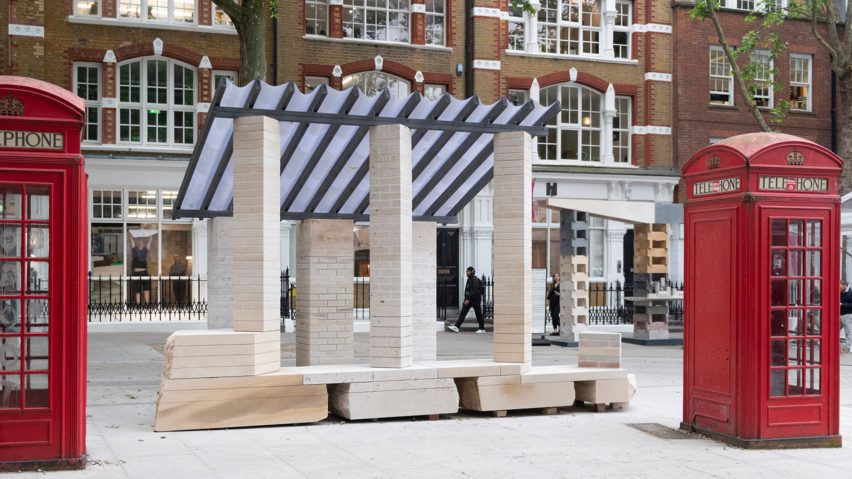
Artefact uses bricks made from "unloved" stone to craft temporary shelter in Clerkenwell
Architecture studio Artefact has created an installation at Clerkenwell Design Week using bricks made of stone, which the manufacturer claims emit 75 per cent fewer greenhouse gases than fired bricks in production.
The temporary shelter, called Brick from a Stone, consists of a colonnade with six columns and was designed by Artefact using stone bricks recently launched by British suppliers Albion Stone and Hutton Stone.
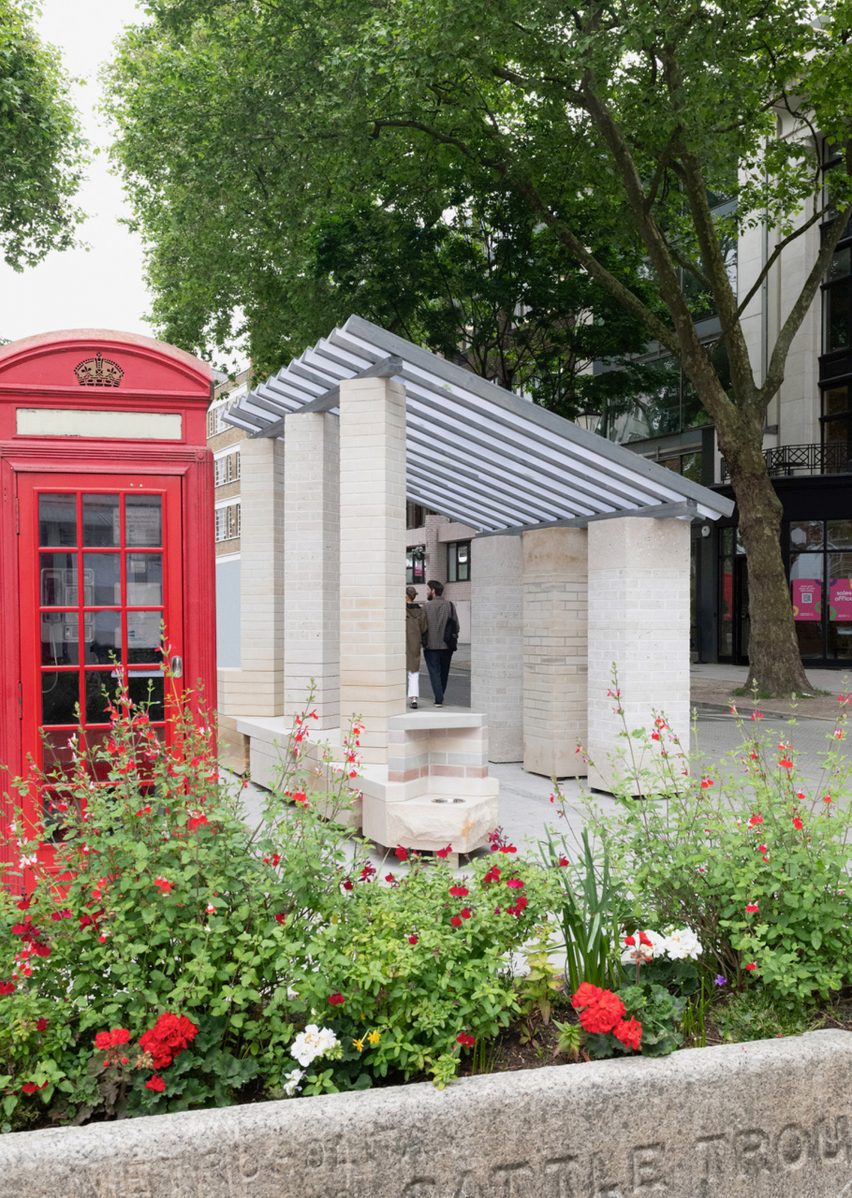
Positioned between two red phone boxes on Clerkenwell Green, the three-metre-tall structure was built using just under 900 stone bricks, made from slabs of "unloved" limestone and sandstone with superficial inconsistencies that make them unsuitable for typical applications.
Producing the stone bricks only generates around a quarter of the emissions compared to traditional clay bricks, according to the manufacturers, as it eliminates the need for energy-intensive firing.
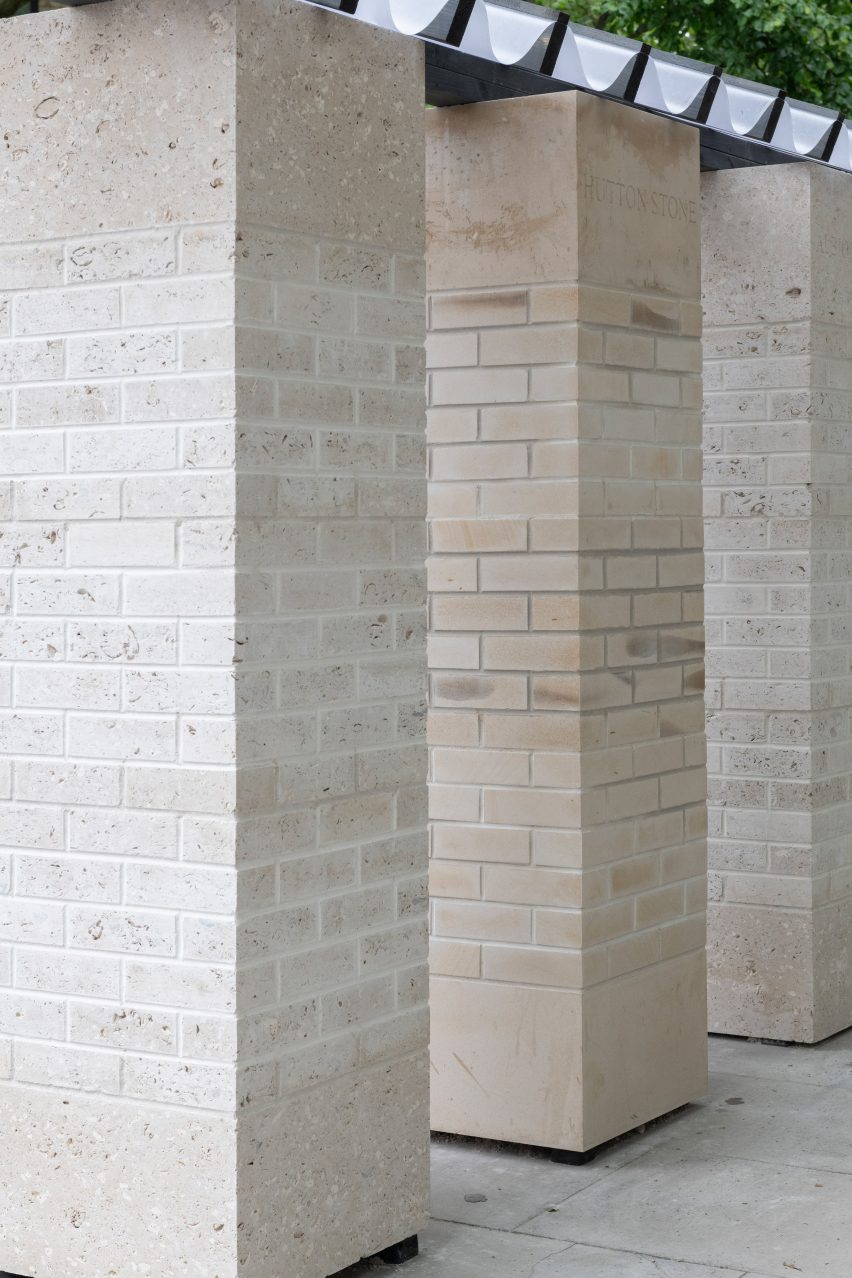
In total, they say the carbon footprint of the 864 bricks used in the installation is equivalent to a third of an average laptop.
"As reducing embodied carbon in buildings becomes a priority, we expect architects to be drawn to the sustainability credentials of these stone bricks," said Michael Poultney, managing director of Albion Stone.
"We have enough 'unloved' Portland stone to construct the equivalent of St Paul's Cathedral in bricks, and we're now set up to produce a million stone bricks a year."
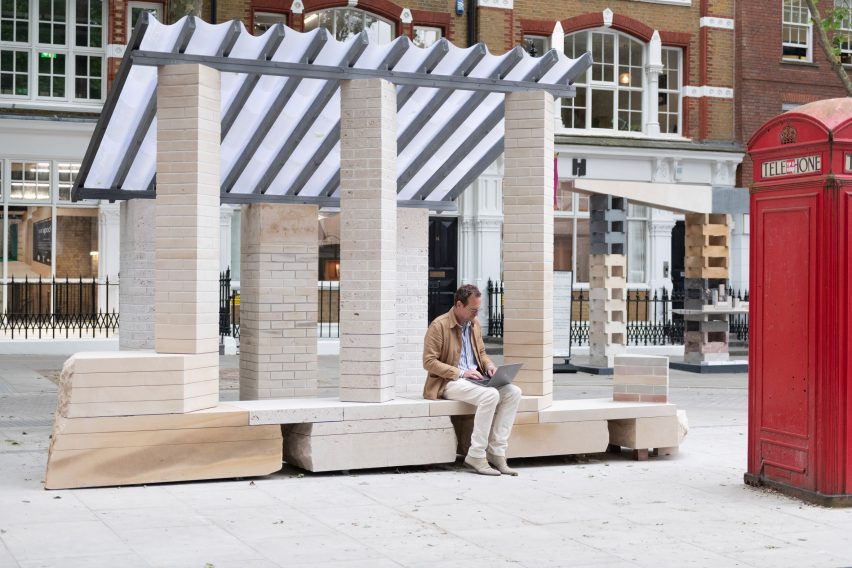
The amount of cuts required to produce the bricks previously made the product economically unviable, according to Hutton Stone's managing director Marcus Paine.
But both companies have recently invested in new machinery to streamline this process and allow them to service requests from industry clients looking for more sustainable construction materials.
"It's a modified bespoke machine originally designed to make paving stones," Paine told Dezeen. "We worked with the manufacturer specifically to create the brick-cutter because this kind of machine doesn't actually exist yet."
For Clerkenwell Design Week, Artefact turned the bricks into a colonnade of six columns in two rows. These support a simple roof made from timber slats and translucent plastic sheets, normally used by masons in the company's workshops to cut the templates for masonry stones.
The three slender columns to the rear are set on plinths that reflect the various production stages of transforming stone boulders into slabs, strips, blocks and finally bricks.
The boulder section at one end doubles as a table and the slabs function as benches where visitors can stop to rest. The installation also references the history of the site by incorporating a drinking bowl for dogs inspired by a nearby horse trough.
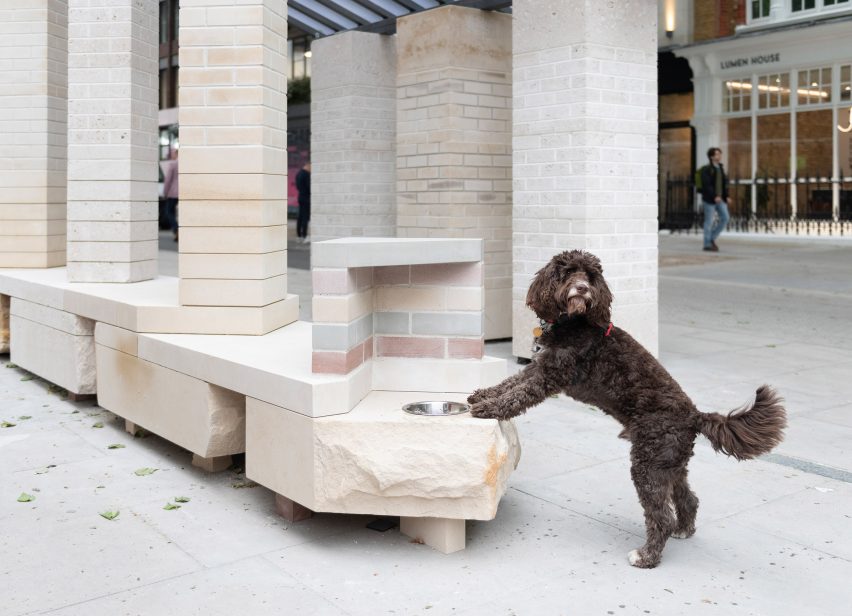
The shorter pillars at the front facing Clerkenwell Green have a more monumental construction that emphasises the finishes of the different stone types.
"The piece hints at the potential to create a new low-carbon vernacular for masonry buildings in the UK that marries the enduring qualities of natural stone with the hand-made qualities of brick," said Artefact director, Daniel Marmot.
For the installation, the bricks are bonded together with lime mortar, which according to the manufacturers has a lower carbon footprint than cement mortar and makes potential disassembly and reuse more straightforward.
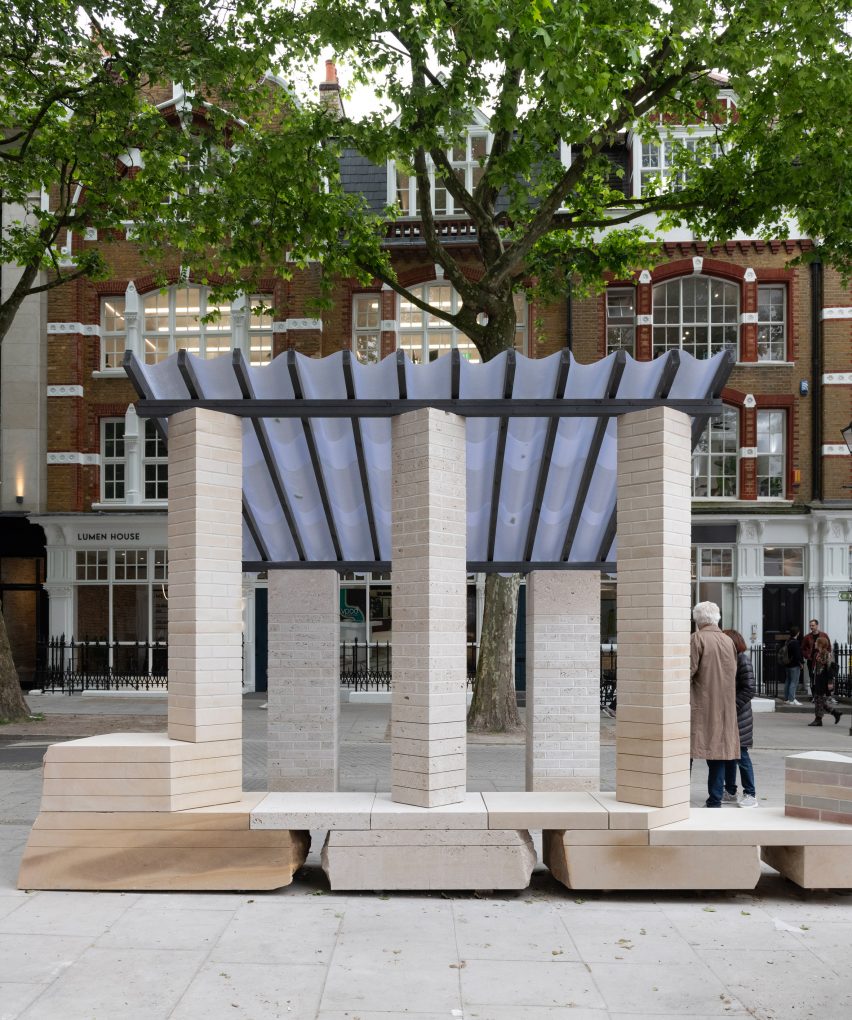
The technical properties of the stone brick are equivalent to a Class B engineering brick, according to Paine.
This means they are much stronger than conventional facing bricks and can be used for load-bearing applications, potentially offering a more sustainable alternative to steel and concrete in many building projects.
After Clerkenwell Design Week, the hope is that Brick from a Stone will turn into a travelling installation with potential stops including a London park and the grounds of a charity in Portland.
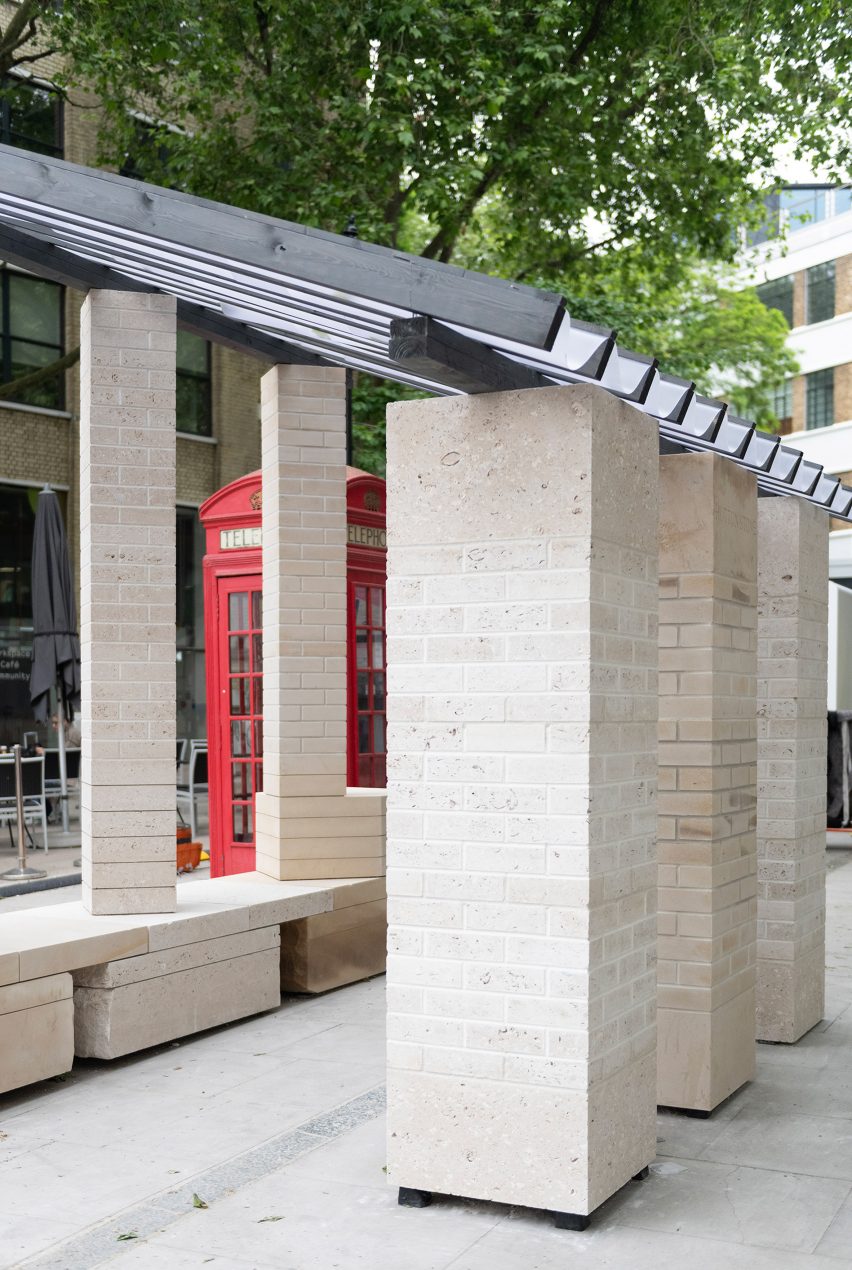
Stone has re-emerged as a popular material with architects, who are increasingly using it for its environmental credentials and inherent structural strength, as well as its natural beauty.
Dezeen's recent Stone Age 2.0 series explored its resurgence, with some architects seeing an opportunity to "develop a new language" for the material.
However, others warned that the sustainability of structural stone is highly dependent on how and where it is quarried, and how it is ultimately used.
The photography is by Ivan Jones.
Clerkenwell Design Week takes place from 21 to 23 May in London. See Dezeen Events Guide for an up-to-date list of architecture and design events taking place around the world.